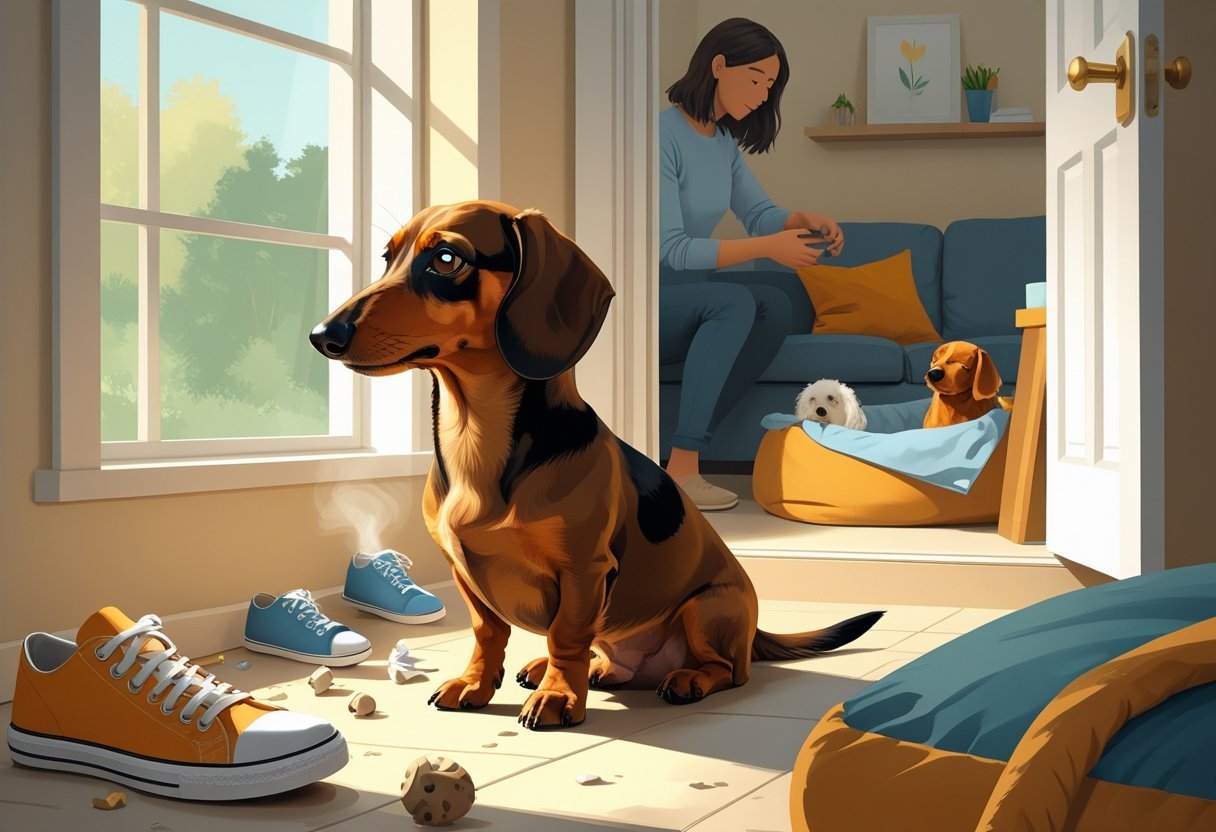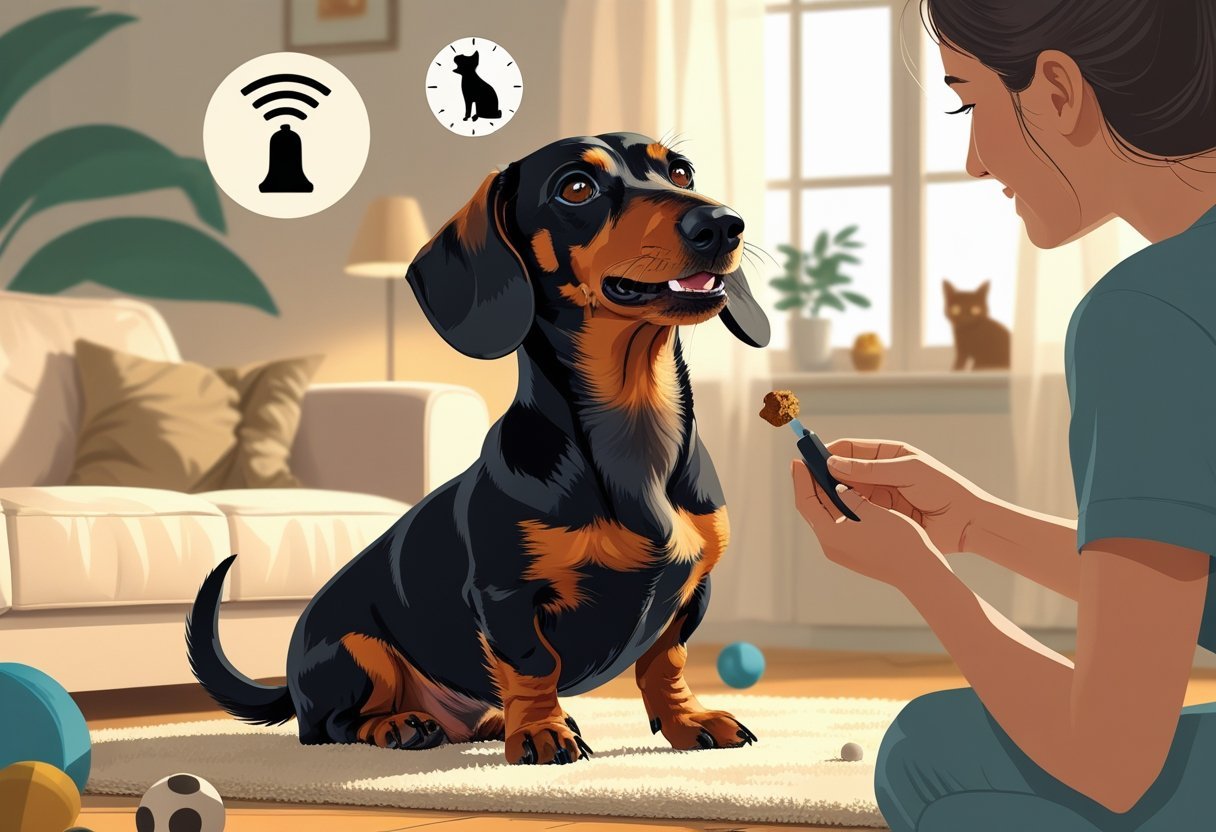Bringing home a Dachshund puppy is pure joy 😊, but raising a confident Doxie takes more than snuggles and treats. Those first few months are crucial—how you introduce your puppy to the world will shape their confidence and future behavior, for better or worse. It is important to socialize dachshund puppy from an early age 🐾.
Socializing your Dachshund puppy between 3-14 weeks lays the groundwork for a friendly, resilient adult who can handle life’s surprises without melting down or acting out 🌍. This window is when puppies soak up new experiences, so it’s the best time to show them all sorts of people, animals, places, and sounds 👥.
Early, positive experiences make a huge difference—helping head off issues like barking, anxiety, or skittishness 😌. Socialization isn’t a one-and-done deal, though. Each good encounter builds your Doxie’s confidence and helps shape the easygoing buddy you want by your side 🐶.
Key Takeaways ✨
- Start socializing your Dachshund puppy between 3–14 weeks, when they’re open to new things. 🌱
- Create positive encounters with different people, animals, and places to build confidence. 🏞️
- Gentle, steady exposure to new stuff helps prevent fear-based behaviors and shapes a happier adult dog. 💛
🐾 Free Dachshund Care Guide
Download our free checklist to ensure your Dachshund stays happy, healthy, and well-loved!
Get Your Free Guide 🐶Understanding the Importance of Early Socialization
Early socialization really shapes your Dachshund puppy’s personality 🧠. What they experience in those first few months sticks with them and colors how they see the world later on 🌍.
Developmental Stages of Dachshund Puppies 🐾
Dachshund puppies go through a key socialization phase from 3–14 weeks. Their brains are like sponges then, soaking up new sights, sounds, and lessons 🍼.
Between 3–5 weeks, puppies start exploring and pick up basic social cues from their mom and siblings 🐕.
From 5–8 weeks, they become more curious, start bonding, and learn about gentle play and bite control 🎾.
At 8–12 weeks, it’s prime time to introduce them to new people, animals, and environments. What they experience now will shape their reactions for years 👫.

🌿 Wild Earth Dog Food – Confidence Starts in the Bowl
Help your Dachshund feel their best during social outings with clean, plant-based nutrition. This vet-formulated food fuels energy, reduces inflammation, and supports healthy digestion—making your pup more comfortable and ready to explore.
- ✅ High-protein, vegan formula supports long-lasting energy
- ✅ No fillers, animal by-products, or artificial additives
- ✅ Supports healthy coat, joints, and a calm tummy
Risks of Poor Socialization ⚠️
If a Dachshund misses out on socialization, behavior problems can crop up and stick around. That can make life tough for both of you 😟.
Fear-based aggression sometimes pops up when a Doxie faces something unfamiliar—think barking, growling, or even nipping 😤.

Separation anxiety and other nervous habits are common in undersocialized dogs. They might chew things up or bark nonstop when left alone 🛋️.
Phobias about loud noises, strangers, or other pets can make daily life stressful for everyone 🔊.
Some Dachshunds get so reactive on walks that it turns a relaxing stroll into a headache 🚶.
Benefits of Raising a Confident Doxie 🌟
When you put in the socialization work, your Dachshund adapts to new things and bounces back from surprises. That makes life smoother for both of you 💡.
They’ll chill out more around guests or in busy places, and you’re less likely to deal with barking fits or nervous outbursts 🏠.
Well-socialized Doxies usually get along better with other pets and kids, keeping the peace at home 👨👩👧👦.
Trips to the vet get way less dramatic when your dog’s used to being handled by new people. That’s a win for their health 🏥.
And honestly, training just goes better with a confident, relaxed dog who isn’t overwhelmed by everything 🎯.
Getting Started: The Best Time to Socialize Your Dachshund
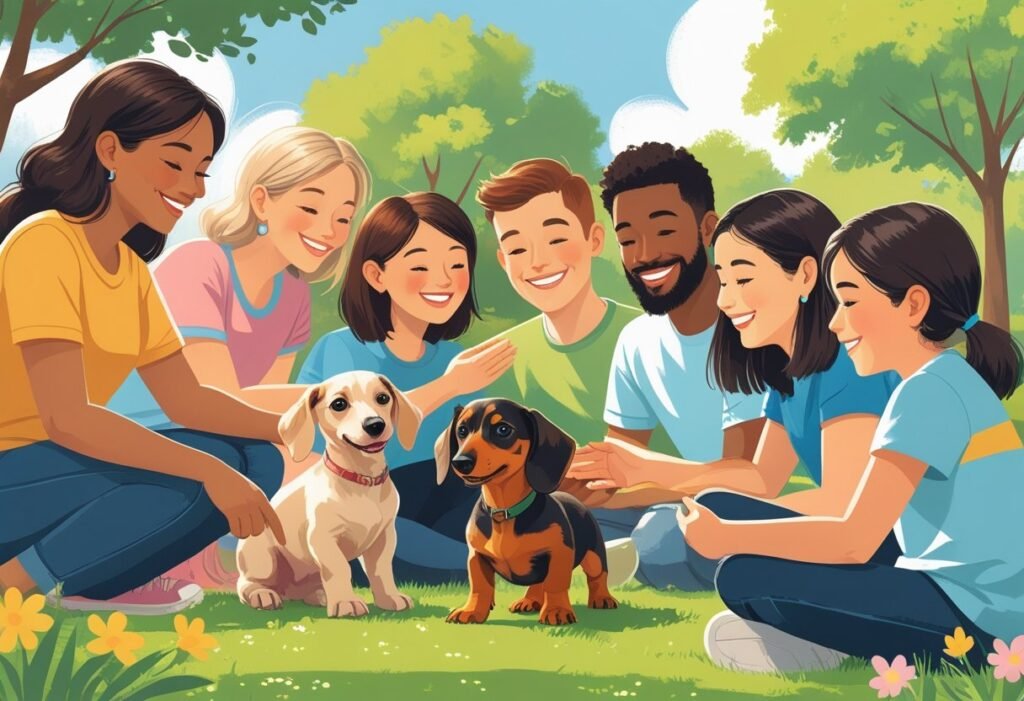
Timing really matters when you’re socializing a Dachshund ⏰. What your puppy experiences during certain stages leaves a lasting mark on their confidence and behavior 🧩.
Recognizing Socialization Windows 📆
The sweet spot for socialization is 3–14 weeks. In this stretch, puppies are open to new things and form memories that stick 🐶.
Puppies younger than 8 weeks should stay with their mom and littermates to learn doggy manners. This early dog-to-dog learning helps prevent bigger issues later 🐕.
When your Dachshund comes home—usually around 8–10 weeks—you’ve got about a month for prime socialization. That’s the time to introduce them to new people, friendly dogs, and different places 🏡.
Studies show puppies socialized during this period are way less likely to develop fear issues as adults 📊.

🧠 Brain Training for Dogs – Unlock Your Doxie’s Social Superpowers
This fun, step-by-step online course boosts your Dachshund’s confidence and attention span—perfect for navigating social outings calmly. Train smarter, not harder, and watch your pup thrive around new people and places.
- ✅ Builds impulse control and focus during walks
- ✅ Ideal for shy or overstimulated puppies
- ✅ Uses gentle, positive-reinforcement techniques
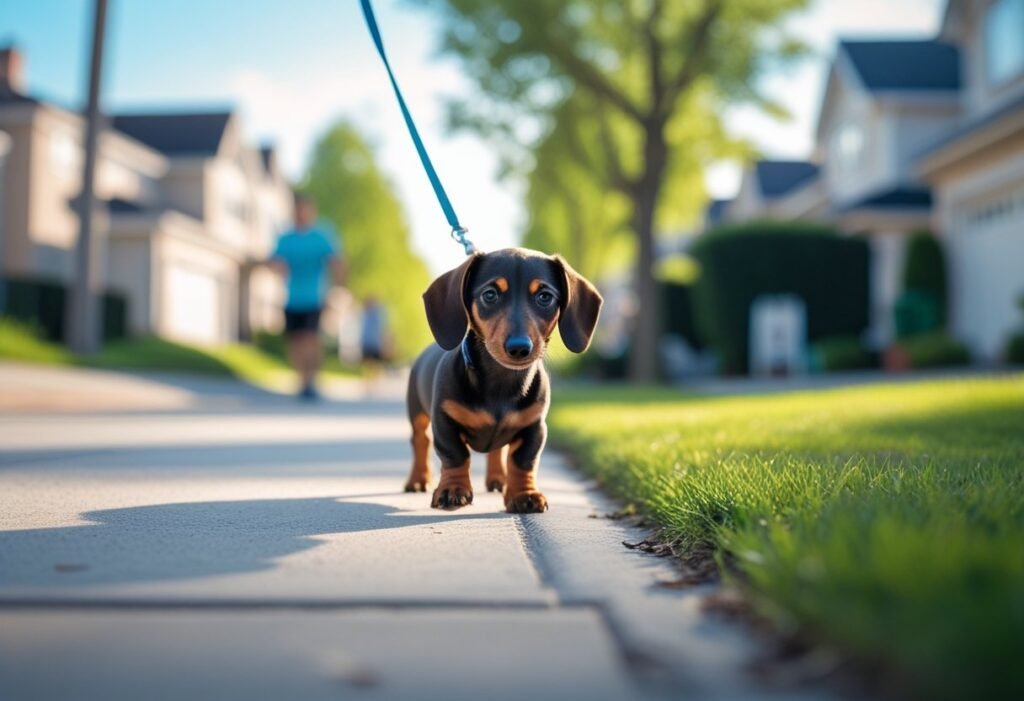
Setting Realistic Expectations 🧘
Socialization takes time. Your Dachshund needs steady, positive exposure—not a flood of new things all at once 🌦️.
Start in calm, familiar spots before moving to busier places. Keep sessions short (5–15 minutes) since puppies have short attention spans 📍.
If you notice stress signals like a tucked tail, wide eyes, yawning, or hiding, back off or pause for a bit 💤.
Every Dachshund’s got their own vibe. Some are naturally bold, others more cautious. Adjust how you socialize based on your pup’s personality and comfort zone 🧠.
Core Dachshund Socialization Techniques
Socializing a Dachshund takes a steady hand and a little creativity 🎨. Here are some practical ways to help your Doxie grow into a confident, well-adjusted adult who can handle whatever comes their way 💪.
Positive Reinforcement Strategies 🦴
Bring treats, praise, and affection whenever your Dachshund handles a social situation well. Reward them right after they interact nicely with someone or another animal. That way, they connect new things with good stuff 🎁.
Keep training sessions short and sweet—5 to 10 minutes tops. Use treats your puppy goes nuts for, especially in tougher situations 🕒.
Clicker training can work wonders for Dachshunds. The click marks the exact good behavior, making it crystal clear what they did right 🎯.
If your Dachshund gets nervous or scared, don’t scold them. That just makes things worse. Instead, give them space and try again later, going slower this time 🧸.
Controlled Exposure to New Experiences 🌍
Start in chill environments before working up to busier places. Begin at home, then maybe a friend’s place, a quiet park, and eventually somewhere with more action 🏡.
Make a checklist of things your Dachshund should try out:
- Different floor types (carpet, tile, grass, gravel) 🛋️
- Various noises (vacuum, doorbell, kids playing) 🔔
- All sorts of people (tall, short, hats, beards—you name it) 🎩
- Other animals, if it’s safe 🐾
Watch how your puppy acts. Loose body, normal breathing? They’re fine. Tucked tail, panting, or hiding? Time to ease up 😌.
Short, positive exposures work way better than long, stressful ones. Five good minutes beats a half hour of nerves ⏳.

🧫 AnimalBiome Gut Health Test Kit
- ✅ Builds strong immunity for stress-free socialization
- ✅ Supports healthy digestion during puppy growth
- ✅ Personalized insights for balanced gut and mood

🌼 Zumalka Calmpet Anxiety Relief Drops
- ✅ Reduces fear and nervousness during first social outings
- ✅ Natural, gentle calming support for young puppies
- ✅ Helps build confidence in new environments

Introducing Doxie to Strangers Safely 🤝
Ask strangers not to loom over your Dachshund. Have them crouch and offer treats without staring. That’s way less scary for a little pup 🐾.
Try this “meet and greet” routine:
- Keep your Doxie on a loose leash 🦮
- Let them approach the person when they’re ready 🚶
- Have the person offer a treat on an open palm ✋
- Only allow petting if your puppy seems comfortable 🐶
It helps to have a “safe word” for when your puppy needs space. Something like, “He’s in training,” usually does the trick and keeps pushy folks at bay 🛑.
Bring along a familiar blanket or toy when meeting new people. It gives your puppy something comforting in a new situation 🧸.
Encouraging Calm Behavior in New Situations 🧘
Teach your Dachshund a “settle” cue for different environments. Start at home, then try it out in busier places 🛏️.
A special mat or blanket can become their “calm spot” wherever you go. That portable safe zone tells your Doxie it’s time to chill 🧺.
Stay calm and confident yourself—Dachshunds pick up on your mood. If you’re relaxed, they’re more likely to be, too ☀️.
Try scheduling socialization after some light exercise. A slightly tired Dachshund usually focuses better and is less jumpy 🐕🦺.
Adding gentle massages can help your Doxie link touch with relaxation. That’s handy for vet visits and when strangers need to handle them 🤲.
Building Confidence With People and Other Animals
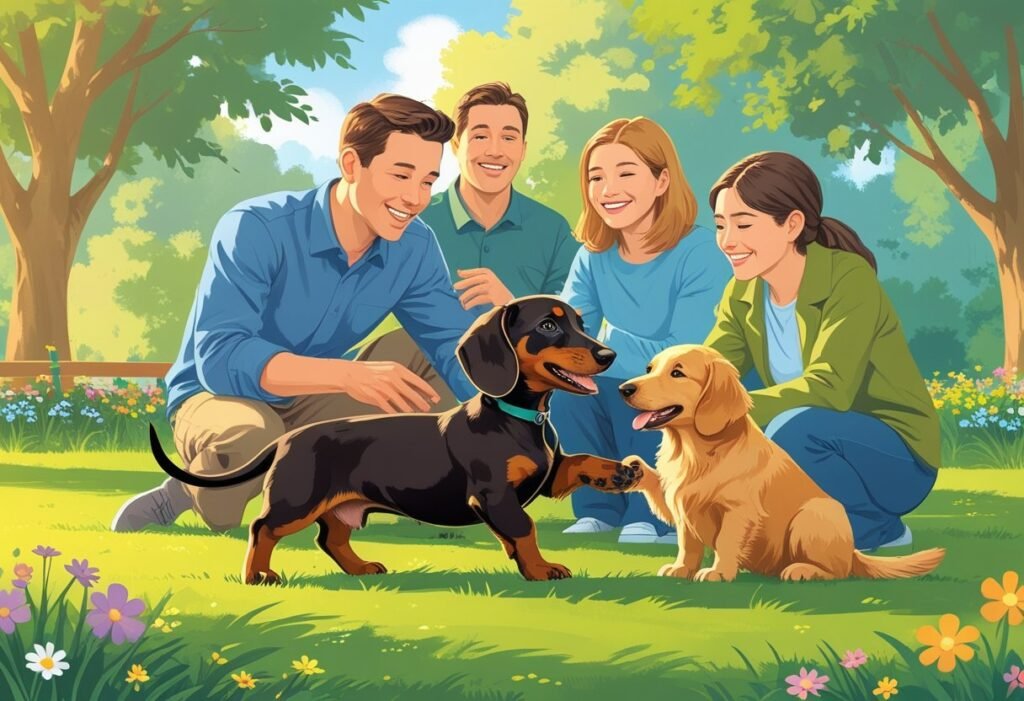
Getting your Dachshund used to different people and animals is a must for a well-rounded pup 🐕. What your Doxie experiences early on shapes how they’ll handle the world as they grow up 🌎.
Meeting New People in Different Settings 🧍♂️🐾
Start with friends and family in calm places. Let visitors offer treats so your puppy connects new faces with good things 🦴. Don’t rush it—let your Doxie decide when to approach ⏳.
Take your pup to different spots to meet people—pet-friendly stores, outdoor cafés, or a quiet park ☕. Keep a close eye to make sure your puppy feels safe and not overwhelmed 👀.
When introducing your Dachshund to strangers, ask them to:
- Crouch to seem less intimidating 🙇
- Hold out an open hand for sniffing ✋
- Speak softly and gently 🎙️
- Wait for your puppy to come to them 🐾
Expose your Doxie to people of all ages, looks, and voices. It helps prevent them from getting spooked by someone different down the road 👶🧓.

🍲 ChefPaw Dog Food Maker – Fresh Starts, Happy Hearts
- ✅ Make nutritious, allergy-friendly meals at home
- ✅ Control ingredients to match your pup’s sensitivities
- ✅ Encourages regular, calm feeding habits

⏰ Petlibro Auto Feeder – Keep Mealtime Predictable
- ✅ Helps create consistent feeding routines
- ✅ Great for crate training and solo stays
- ✅ Voice feature comforts your pup during meals
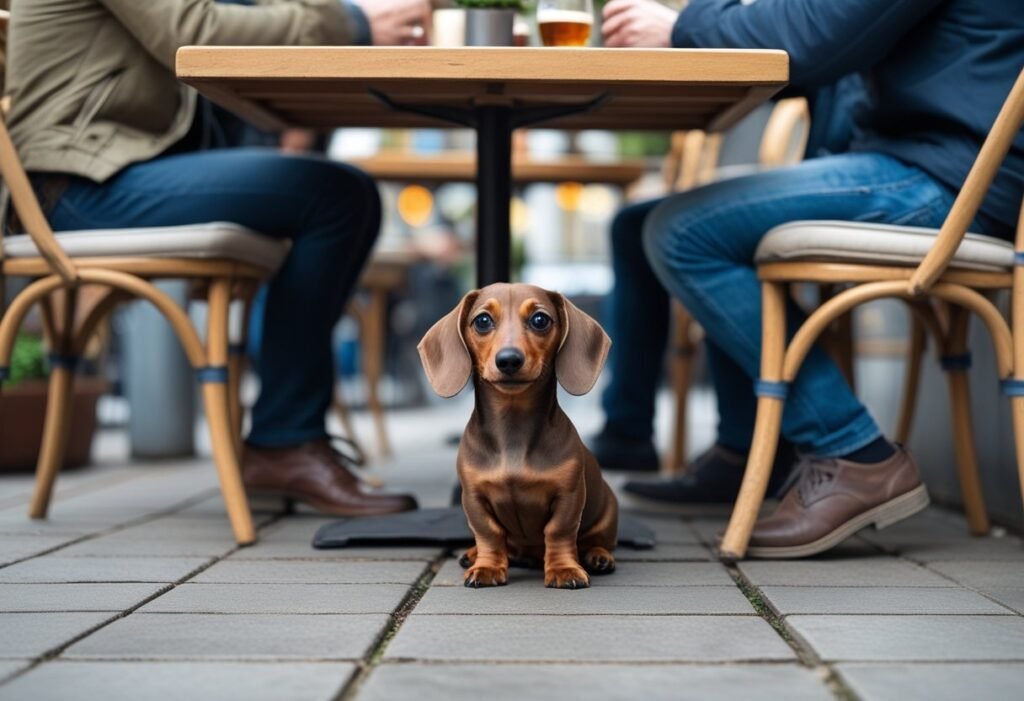
🎉 Grab your free Dachshund care checklist!
Safe Interactions With Other Dogs 🐩
Start with calm, friendly dogs—ones you know are vaccinated and good with puppies 🩺. For young pups, 5–10 minutes is plenty for a first meet-up ⏱️.
Pick a neutral territory for introductions, not your home or the other dog’s turf. That way, neither dog feels like they have to defend their space 🚫🏠.
Stick around and keep an eye on play sessions. Watch for these good signs:
- Relaxed body language 🧘
- Play bows (front down, rear up—classic puppy stuff) 🎯
- Taking turns chasing 🐕
- Pausing and then going back to play 🔁
If your Dachshund gets overwhelmed, set up a safe space where they can chill out 🧺. Don’t push your puppy into interactions if they’re scared or anxious 😟.
Mix things up over time—introduce your Doxie to different breeds, sizes, and play styles 🐾. It’s the best way for them to get comfortable with all kinds of dogs 🐶.
Navigating Common Socialization Challenges
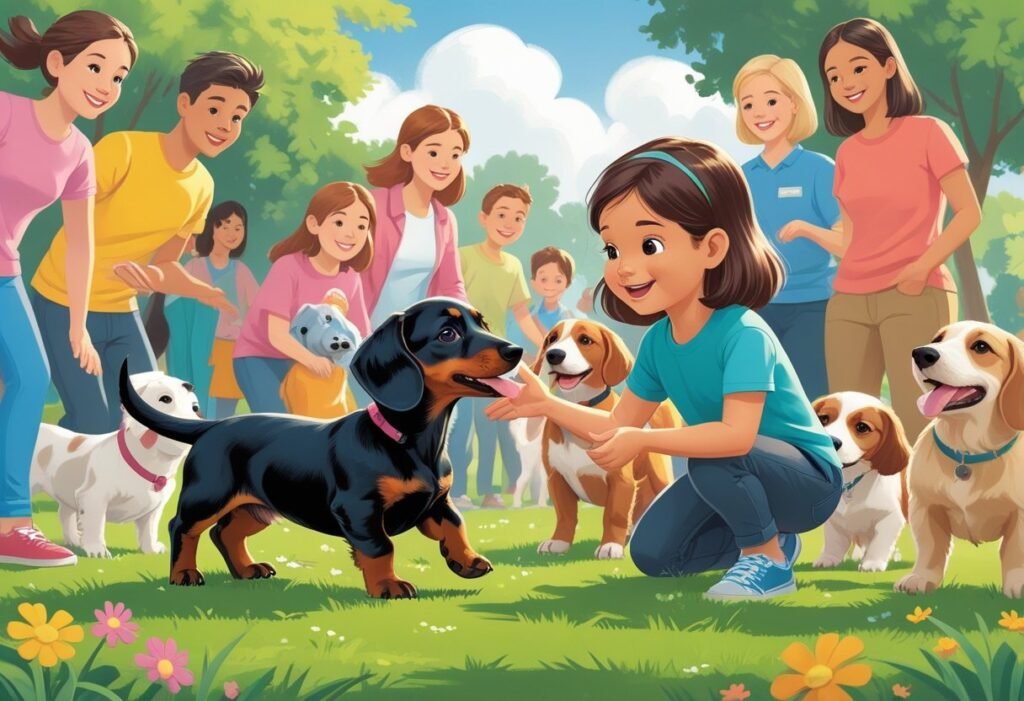
Dachshunds sometimes hit a few bumps during socialization ⚠️. You’ll need a little patience and a few tricks up your sleeve, but with the right approach, most puppies come around 🐾.
Managing Shyness or Timidity 😶🌫️
It’s common for dachshund puppies to seem shy in new places or around new folks. If your puppy backs away or hides, don’t force it. Let them hang back and observe from a safe spot 🧺.
Lean on positive reinforcement. Even tiny acts of bravery deserve treats and praise 🎉.
Try a gradual exposure plan:
- Start out in quiet spots with just a couple of calm people 🧍
- Add more commotion as your puppy’s confidence grows 🌈
- Let your puppy decide when to approach—no pressure 🐕
When you have guests, ask them to ignore your dachshund at first. Let your puppy make the first move. It’s honestly more effective than trying to coax them 🛋️.

📹 Petcube Cam 360
- ✅ Watch your puppy’s interactions and confidence progress
- ✅ Two-way audio helps reassure your pup while you’re away
- ✅ Encourages safe independence during early socialization
📍 Tractive DOG GPS Tracker
- ✅ Keep track of your curious puppy during outdoor adventures
- ✅ Safe exploration builds confidence during socialization
- ✅ Lightweight and puppy-friendly design
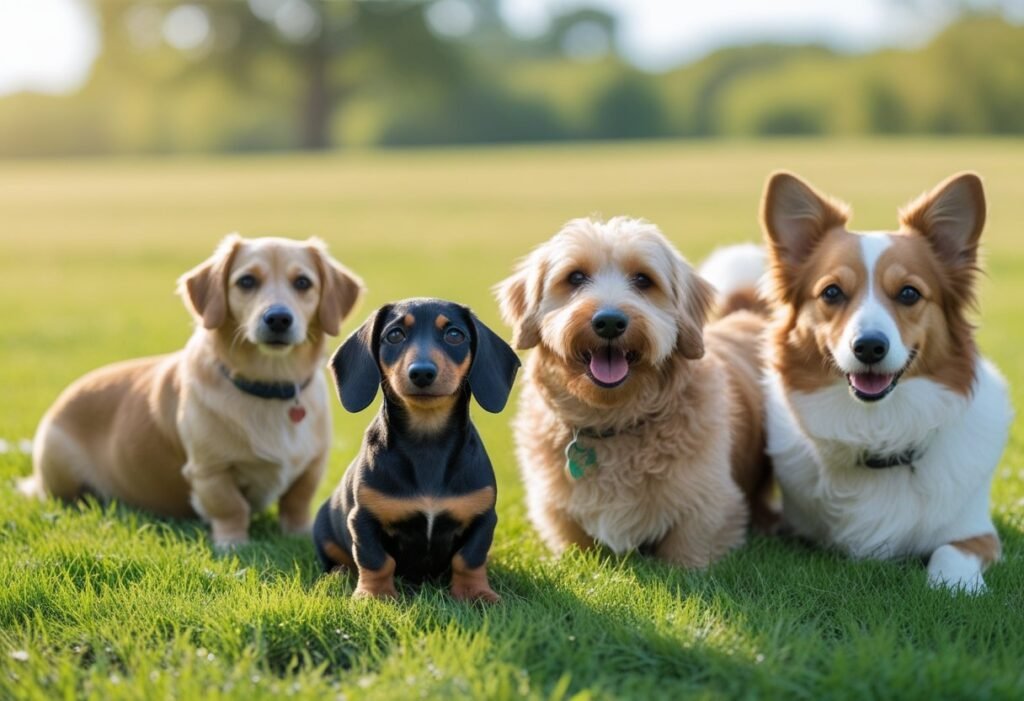
Addressing Fear and Aggression 🐾⚠️
Sometimes, fear-based behaviors pop up if socialization gets rocky. Look for warning signs: growling, excessive barking, or raised hackles in new situations 🚨.
Don’t punish fear. That just makes things worse. Instead, try to build positive associations with whatever’s freaking them out 🌱.
Use desensitization: expose your dachshund to the scary thing from a distance where they’re still calm. Over time, get a little closer, session by session 📏.
If your puppy guards toys or food, set clear boundaries. Play “trading” games—swap a toy or treat for something even better 🔄.
If things aren’t getting better, or aggression sticks around, it’s worth bringing in a pro trainer 👩🏫.
Socializing in the Home Environment
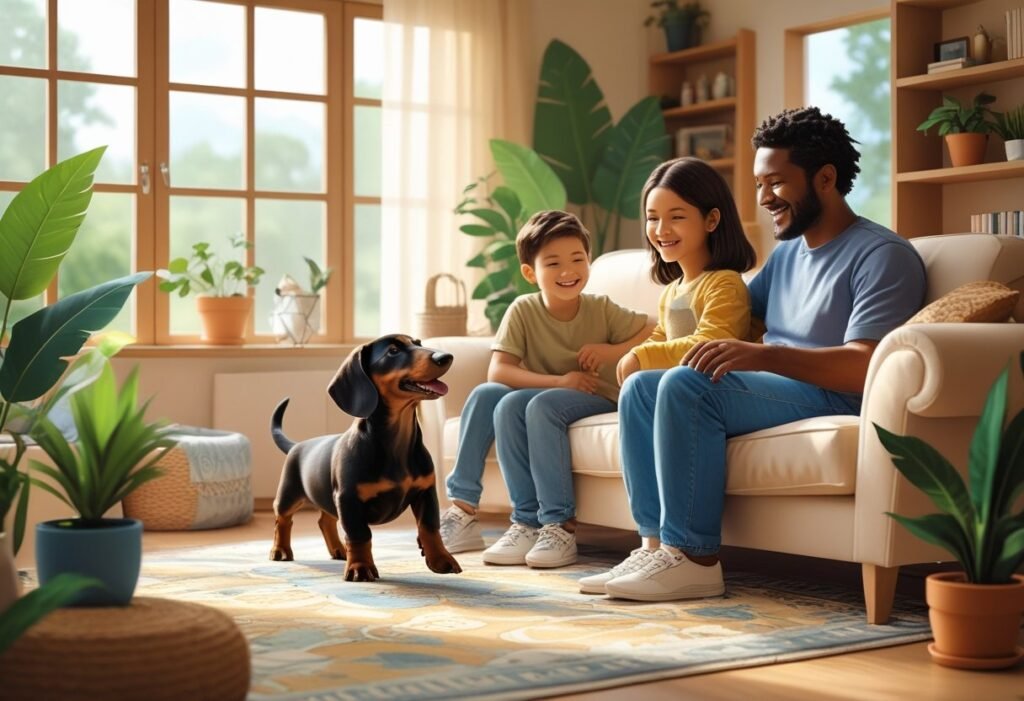
Home is your dachshund puppy’s main hangout 🏡. Creating a positive environment goes a long way toward building confidence and easing fear-based behaviors 💛.
Inviting Guests and Familiarization 🧍♀️🐕
Having people over helps your dachshund’s social development. Start with guests who get puppies and know how to be calm 🧘.
Ask visitors to ignore your puppy at first. Let your doxie come over when they’re ready. Once they’re relaxed, guests can offer treats with an open hand 🤲.
Frequency matters! Try to mix it up and invite different people:
- Family 👨👩👧
- Friends 👯
- Folks of different ages and looks 👶🧓
- People wearing hats, sunglasses, or uniforms 🧢😎
Never push your puppy into socializing. If they seem spooked, back off. Try again later, but tone things down. Keep treats handy to make new people less scary 🍪.

🛏️ Majestic Orthopedic Bed – Safe Space to Rest & Recharge
- ✅ Reduces joint stress after big social play sessions
- ✅ Durable, supportive, and cozy beyond belief
- ✅ Easy to clean for everyday puppy life

🪜 Majestic Pet Stairs – Reach New Heights Safely
- ✅ Helps your pup get on beds or sofas without back strain
- ✅ Encourages independence and positive habits
- ✅ Lightweight and stable for small breeds
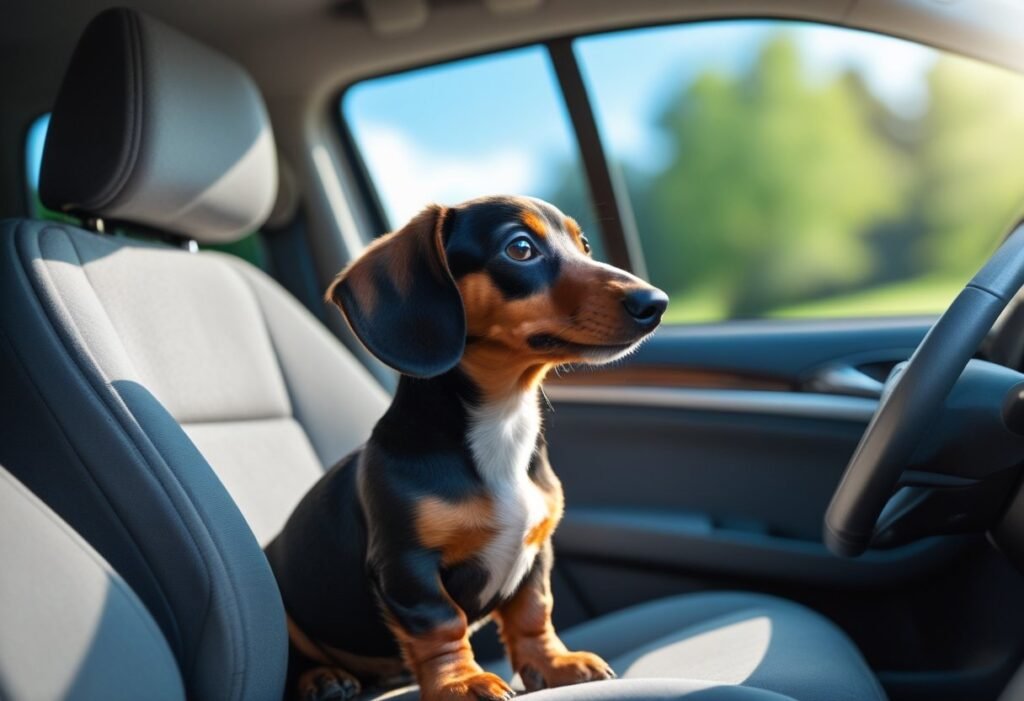
Household Noises and Stimuli 🔊
Dachshunds need to get used to everyday household sounds. The vacuum, doorbell, and kitchen gadgets can all seem intimidating 🧼.
Go slow. Start with recordings at a low volume:
- Play doorbells, vacuums, and other noises softly 🎶
- Pair the sounds with treats or playtime 🐾
- Gradually turn up the volume as your puppy relaxes 🔉
Everyday stuff is a training opportunity. When you’re cooking, let your puppy watch from a safe spot. Turn on appliances while they’re busy with a toy or treat 🍲.
Set up a safe place for your puppy to retreat if things get too noisy. It helps them learn to self-soothe instead of freaking out 🧺.
Outdoor Socialization for Dachshund Puppies

Getting your Dachshund puppy outside is huge for building confidence and social skills 🌎. The world’s full of sights, sounds, and smells—they need to see it all 👃.
Leash Training in Public Spaces 🦮
Start leash training somewhere quiet. Use a lightweight leash and a properly-fitted harness to protect your Dachshund’s back 🎽.
Keep first walks short—5 to 10 minutes is plenty. As your puppy gets bolder, you can go longer ⏱️.
When your puppy acts calm around new people or dogs, reward them with treats. It helps them focus on you and see new things as positive 🍪.
Practice “sit” and “stay” at street corners. It teaches your Dachshund to pause before crossing and helps with impulse control 🚦.
Let your puppy explore at their own pace. Forcing things can backfire and make them nervous. If you see stress—tucked tail, flattened ears—take a step back 🐾.

🩺 The Swiftest Pet Insurance
- ✅ Protects your puppy during early socialization and training
- ✅ Covers unexpected vet visits, injuries, or playtime accidents
- ✅ Helps you focus on confidence building — not medical costs
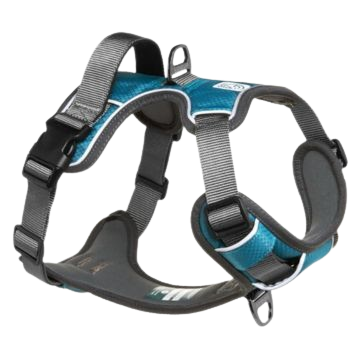
🎽 Embark Pet Adventure Harness
- ✅ Perfect for safe puppy walks and positive social outings
- ✅ Distributes pressure evenly to protect growing backs
- ✅ Adjustable, comfy, and confidence-boosting for new explorers

Exploring Parks and Busy Areas 🏞️
Try new places every week. Parks, outdoor malls, pet-friendly shops—just wait until your puppy’s had their core shots 🛍️.
Don’t forget the basics for outings:
- Water and a portable bowl 💧
- Treats for rewards 🍪
- Waste bags ♻️
- A favorite toy 🧸
Set up puppy playdates with friendly, vaccinated dogs close in size. Dachshunds learn a ton from playing with other small breeds 🐶.
Keep an eye out for overwhelm—panting, hiding, or ignoring treats means your puppy needs a break. Give them space or wrap up the session if it’s too much 🌬️.
Let your Dachshund walk on different surfaces—grass, gravel, wood chips, concrete. It’s good for their confidence and paws 🌿.
Maintaining Social Skills as Your Doxie Grows

Social skills aren’t a “one and done” thing—your Dachshund needs practice, even after puppyhood 🔁. Regular outings and positive training keep your Doxie confident for life 🐾.
Consistent Positive Interactions 🧍♂️🐕
Keep up weekly trips to dog-friendly places—pet stores, outdoor cafes, parks. These spots offer controlled ways to meet new people and dogs 🛒.
Arrange playdates with well-behaved dogs to keep social skills sharp. It helps your Dachshund avoid getting territorial or anxious as they grow up 🐕.
If your dog seems anxious—tail tucked, panting, hiding—move to a more comfortable distance. No need to bail completely, but don’t push them past their limits 🌬️.
Reward chill behavior around strangers with treats and praise. It’s honestly one of the easiest ways to help your dog see new people as a good thing 🍪.
🌟 Puppy Confidence & Care Essentials for a Well-Socialized Dachshund 🐾
- 💧 Petlibro Water Fountain — Encourage your Dachshund puppy to stay hydrated during active playdates and outdoor adventures, supporting overall health and energy.
- 🍪 Petcube Bites 2 — Reward your pup for calm, positive behavior when meeting new people or pets — and monitor them remotely with built-in video and treat tossing.
- 🛁 Pride + Groom Grooming Tools Kit — Gentle grooming sessions help desensitize puppies to touch and build trust — essential for confident socialization.
- 🧬 AnimalBiome Gut Restore Capsules — Promote balanced digestion and reduce stress-related tummy troubles that can occur during early socialization experiences.

Refreshing Training Activities 🧠🎯
Mix up training exercises to keep your Dachshund’s mind busy. Teach a new trick every month, and keep practicing the old ones too 🧩.
Try advanced classes or a dog sport like nosework or agility. These activities boost confidence and reinforce obedience when there are distractions 🏆.
Practice commands in different places—home, yard, parks, walks—so your Doxie listens no matter where you are 🗺️.
Bring in new stuff every so often: umbrellas, bikes, shopping carts. Give treats when they check out new things, so they keep seeing the world as safe 🚲.
Sneak short training sessions into daily life. Ask for a “sit” before meals or a “stay” before opening doors. Keeps things fresh and practical 🍽️.
When to Seek Professional Help
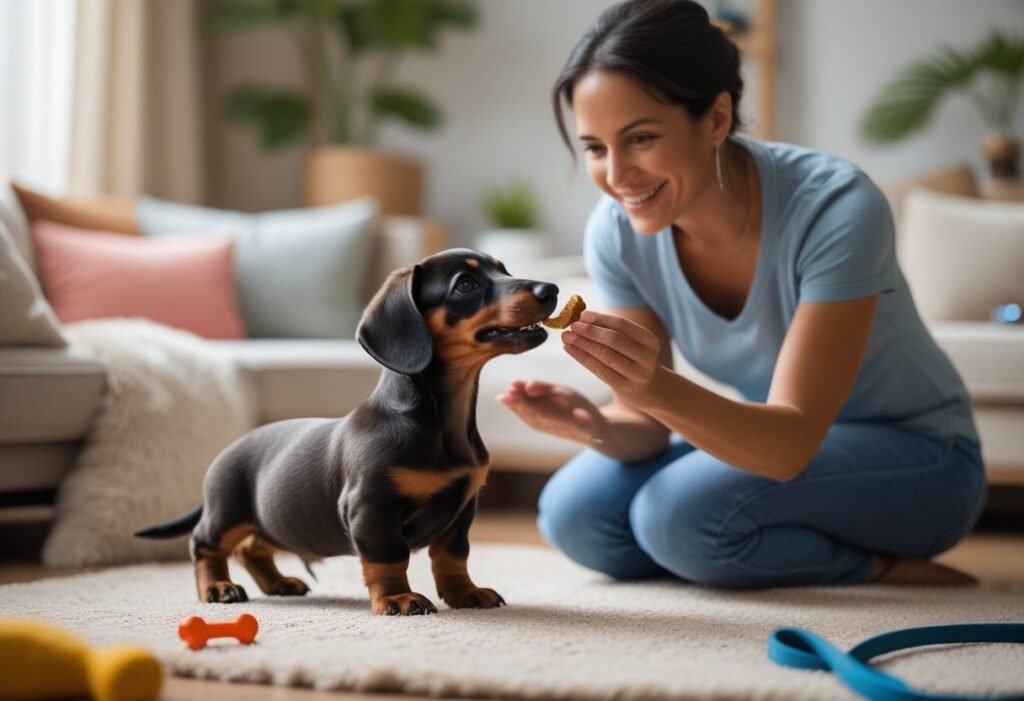
Sometimes, Dachshund puppies need more help than you can give at home 🏠. If your puppy struggles with fear, aggression, or just can’t seem to adjust, a professional can make a world of difference 🐶.
Working With a Canine Behaviorist 👩🏫🐕
A canine behaviorist knows how to read and improve dog behavior. Think about calling one if your Dachshund shows:
- Persistent fear that doesn’t get better with gentle exposure 😟
- Aggression—growling, snapping, biting ⚠️
- Extreme anxiety with new people or dogs 😰
- Trouble calming down in social settings 😵💫
Behaviorists use science-backed methods and will build a plan just for your dog 🧠.
Don’t wait too long—catching problems early helps keep bad habits from sticking. Most behaviorists do in-home visits so they can see your puppy in their usual environment 🏡.
💛 Confidence, Calm, and Care Essentials for Your Dachshund Puppy 🐶
- 🎽 Coastal Pet Harness – A gentle, adjustable fit that keeps your Dachshund puppy secure and comfortable during early socialization walks.
- 🌿 Innovet PurCBD Oil – Helps calm anxious puppies during new experiences, easing stress while encouraging confident behavior and focus.
- 🧴 King Klean Dog Shampoo (King Kanine) – Keep your Doxie’s coat soft, shiny, and irritation-free — ideal for getting them comfortable with grooming routines early.
- 👕 Dog is Good Apparel & Gifts – Spread positive puppy energy and share your love for your little explorer with uplifting, dog-lover apparel and accessories.
- 🎨 Purr & Mutt Personalized Dachshund Art – Celebrate your Doxie’s confidence and milestones with a unique, custom art piece that captures their growing personality.
🌟 Build trust, promote calm, and nurture your Dachshund’s confidence with these thoughtful essentials — perfect for raising a happy, socialized pup.
Puppy Socialization Classes 🎓🐾
Structured classes give your Dachshund a safe space to learn social skills. Here’s what you get:
- Controlled settings for meeting other puppies 🐕
- Guidance from pros 🧑🏫
- Structured activities that build confidence step by step 📈
- Feedback on your training style 🗣️
Look for small classes that use positive reinforcement. Puppies should be grouped by size—your little Doxie needs that protection 🧸.
Many vet clinics and pet stores offer these programs. The best ones check that all puppies are up-to-date on vaccines 💉.
Classes usually last 4–8 weeks and come with homework to practice in between 📅.
🐾 Don’t Miss Out!
Download our free Dachshund care guide to keep your furry friend happy and healthy.
Get Your Free Guide 🐶Frequently Asked Questions

Dachshund owners run into some unique challenges with these quirky, lovable dogs. Here are a few solutions for those common worries—whether it’s anxiety, stubbornness, or training hiccups, you’re definitely not alone.
What are effective methods to reduce anxiety in Dachshunds?
Try to keep your Dachshund’s daily routine as steady as possible 🕰️. These little dogs seem to relax more when they know what’s coming—regular meals, walks, and playtime all help 🐾.
Give your Dachshund a cozy spot to hide out when things get stressful. A crate with soft bedding and a couple of their go-to toys can work wonders as a safe haven 🧺.
When your Dachshund stays calm, let them know you appreciate it. Toss a treat their way, offer a little praise, or just give them a gentle scratch 🐶. Positive reinforcement goes a long way 🎉.
Anxiety wraps or vests—those snug-fitting shirts—sometimes help during thunderstorms or fireworks. Worth a shot if your pup gets rattled by loud noises 🌩️.
If certain things make your Dachshund anxious, introduce them slowly in a safe, positive setting. Start small and build up as they get used to it. It’s not instant, but patience pays off 🌈.
What are the steps to potty train a Dachshund puppy effectively? 🚽
Stick to a schedule for feeding, water, and bathroom breaks. Take your puppy out right after waking up, after eating, after naps, and before bed. It’s a lot, but consistency helps ⏱️.
Keep an eye out for signs—sniffing, circling, maybe a little whine. When you see it, get your puppy outside fast 🐕.
Pick a simple command like “potty” or “business” and use it every time they go. Eventually, they’ll connect the dots 🧩.
As soon as your Dachshund finishes outside, celebrate like it’s a big deal. Treats, happy voices, the whole thing. It really sinks in 🎉.
Skip the punishment if there’s an accident. Just clean up with an enzymatic cleaner so they’re not tempted to go there again. Accidents happen—no need to make a fuss 🧼.
What are the best practices for training a Dachshund puppy not to bark excessively? 🔇
First, figure out what sets off your Dachshund’s barking. Maybe it’s strangers, boredom, or just wanting your attention. Each cause might need a different approach 🤔.
Try teaching “quiet.” Wait for a pause, say “quiet,” and if your pup stops, reward them. It’s not magic, but it does work over time 🍪.
Keep your Dachshund busy, both mentally and physically. A tired dog usually doesn’t bark just for the fun of it 🎾.
Whenever your Dachshund stays quiet in a situation where they’d normally bark, let them know you noticed. A treat or a bit of praise can reinforce that choice 🌟.
If certain things always trigger barking, work on desensitization. Start with the trigger far away—maybe a neighbor’s dog or the mail carrier—and slowly decrease the distance as your pup gets used to it 🚶.
What are the techniques to prevent a Dachshund puppy from biting? 🐾
Offer good chew toys right when your puppy starts to bite hands or clothes. Redirecting that energy is key 🧸.
If your Dachshund bites too hard during play, say “ouch” in a sharp, short tone and stop playing for a moment. It’s a clear message that rough biting ends the fun 🛑.
Don’t use physical punishment for biting. It just makes things worse—more fear, maybe even more biting ⚠️.
Socialize your puppy with different people and dogs, but keep it controlled and positive. They’ll learn better ways to interact than using their teeth 👫.
Puppy classes can be a huge help. Trainers have seen it all and can offer techniques that fit your Dachshund’s quirks 🎓.
How can you teach a Dachshund puppy to cope with being alone? 🏠
Start by leaving your Dachshund alone for just a couple of minutes. Gradually stretch that time out as they get more comfortable. No need to rush it ⌛.
Make your departures something they look forward to. Maybe save a special treat or toy just for when you leave 🎁.
Try to keep goodbyes and hellos pretty chill. Big emotional scenes can actually make separation anxiety worse 😢.
Create a little pre-departure routine—like grabbing your keys or putting on your shoes—so your Dachshund learns these actions aren’t a big deal 🔑.
Some people swear by calming music or dog TV in the background. It can’t hurt to try if your pup seems lonely when you’re out 📺.
What are the common mistakes to avoid when raising a Dachshund puppy? ❌
Letting your Dachshund jump on and off furniture sounds harmless, but it can really mess up their back. Honestly, it’s better to set up ramps or little steps so they can reach beds and couches without risking an injury 🛏️.
If you skip socialization during that important 8–16 week window, you might end up with a nervous or even snappy pup. It’s best to let your puppy meet all sorts of people, animals, and see new places right from the start 🌍.
Training that’s all over the place just leaves Dachshunds confused. Everyone in the house should stick to the same commands and rules—otherwise, the poor dog won’t know what’s expected 🧠.
Dental care often gets ignored, but it’s actually a big deal. Get into the habit of brushing your Dachshund’s teeth early on, so it just becomes part of life for both of you 🦷.
If you don’t give these clever little dogs enough to do, well, they’ll find their own fun—and it usually isn’t what you want. Puzzle toys, short training sessions, or just some goofy games can help keep them out of trouble and a lot happier 🧠.


